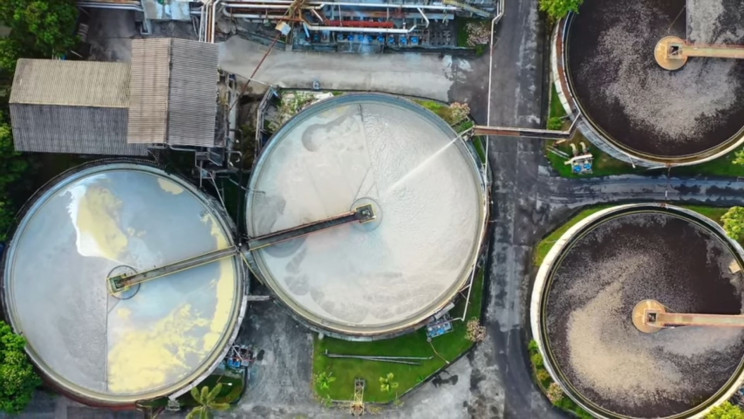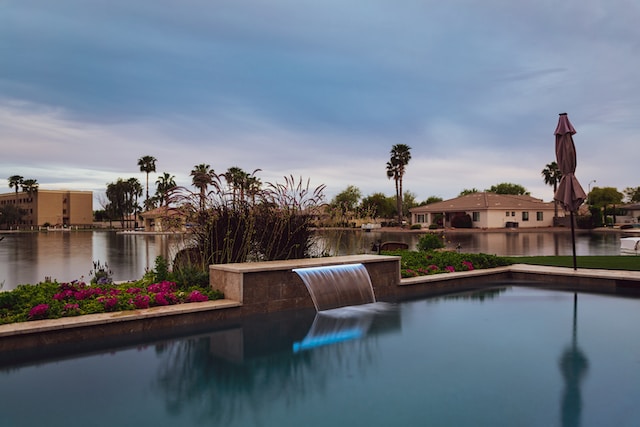Alvarado Water Treatment Plant
Expansion of the water treatment plant in San Diego began in 2008. The project is expected to take 20 years and will be completed in five phases. The new facility will have a daily filtration capacity of 800,000 m³, approximately double the current size. The upgraded facility is expected to meet the needs of San Diego’s growing population through at least 2030 and the facility has an expected lifetime of 75 years.
The Alvarado plant is one of three that serve San Diego residents. The first phase was to enhance chemical treatment facilities and pumping systems at a cost of $65 million. Phase 2 includes installation of the plant’s flocculation and sedimentation basins and an upgrade of the electrical and control systems of the plant’s eight original filters. Phase 3 increases plant capacity from 150 MGD to 200 MGD (million gallons a day).
The remaining phases will add major ozone treatment facilities, including ozone generators. The fifth and final phase will involve shoreline landscaping, storm water management facilities, and backup pumps and generators.
Euclid Creek Storage Tunnel
In Cleveland, Ohio, the Euclid Creek storage tunnel, part of a larger network of underground tunnels, is being built to significantly reduce sewage overflows. Cleveland’s sewers were built at the turn of the 19th century and carried sewage, industrial waste and storm water or “Combined Sewer Overflows” (CSO) in a single pipe. During heavy rains this mixture of wastewater and storm water would overflow into the area’s waterways including Lake Erie and Euclid Creek.
The $204 million upgrade project will add 18,000 feet of tunnel with a diameter of 24 feet and have a capacity to hold 70 million gallons of CSO.
William Jack Hernandez Sport Fish Hatchery
The state of Alaska has three main fisheries that the Department of Fish and game use each year to stock almost 100 Alaska lakes with “catchable-size” Rainbow Trout, Arctic Char, Chinook Salmon and Grayling.
A new facility called the William Jack Hernandes hatchery at joint base Elmendorf Richardson in Anchorage was built at a cost of $100 million. The new hatchery employs water warming technology that helps the hatchery grow fish faster and bigger, increasing the number of catchable (10″ or longer) fish for sports fishermen. Sport fishing in Alaska is a big business.
Lake Oswego Interceptor Sewer (LOIS)
The original Lake Oswego interceptor sewer was built in the 1960s. It is submerged 14 to 21 feet below the surface of the lake and includes 13,000 feet of 16 to 36 inch diameter pipe running from one end of Lake Oswego to the other. There are an additional 5,000 feet of smaller diameter trunk sewers in canals and bays around the lake. LOIS collects flows from over 4,500 acres of service area.
The project is working to increase the capacity by increasing pipe size and soundness. Many of the original lines installed in the lake were supported by steel piles which have corroded or weakened significantly. The current structure is believed to be seismically vulnerable.
Replacement pipe will be buoyant pipe attached to bottom anchors and tethers floating 8 to 17 feet from the bottom of the lake.
My Waterway Punggol, Singapore
Punggol, Singapore, used to be a fishing village surrounded by poultry farms and vegetable plantations. It is now a new residential town and the purpose of the Waterway Park is to provide residents with a recreational setting. The waterway traverses the town center and the coastal promenade includes open space seafood restaurants and stores.
The waterway and bridges create a walking, inline skating or biking route 5.2 miles (8.4 km long). There is a large event space used for festivals and other special occasions.
The following video shows some of these recent civil engineering projects.







